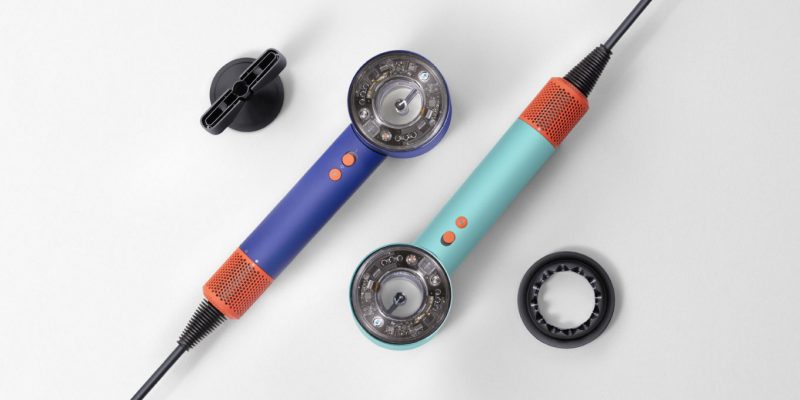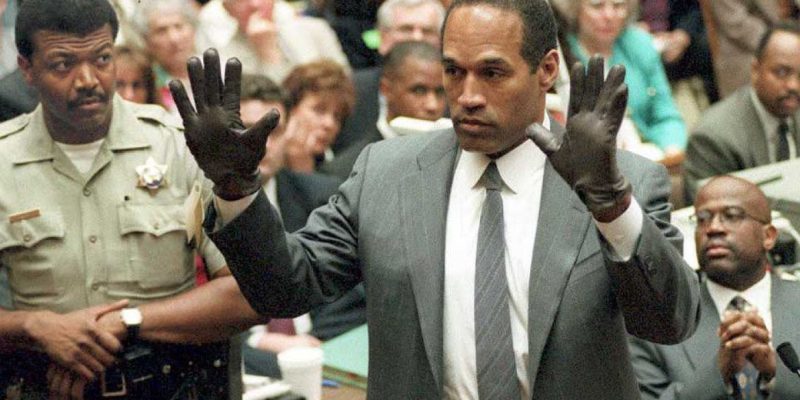Society
Breathing Through Trauma
Taking a deep inhale is known to help you relax, but more people are now using their breath to heal from traumatic experiences.
by : Stephanie Mercier Voyer- Jul 22nd, 2021

GETTY IMAGES
About two years ago, I had a serious accident that left me with a fractured pelvis, left foot and L1 vertebra. I had gone rock climbing at a gym with a friend and forgot to properly secure my harness before my ascent. I’d climbed about three-quarters of the way up the wall (roughly the height of a two-storey building) when the rope fell to the ground and we realized I wasn’t attached. Attempting to climb down was out of the question due to a tricky overhang and the fact that my hands were trembling with fear. I held on for as long as I could, but after a few seconds or minutes (it turns out that in real life—just like in any good action movie—time has a tendency to slow down during do-or-die situations), my fingers gave up and I fell to the ground. But unlike the slow-motion-fall movie trope, my fall happened really fast. There was but a split second between when I let go of the grip and when my body violently hit the thin mat covering the gym floor. I didn’t even scream when the shock turned into pain. I pretended everything was just fine, even going as far as to say “I probably just pulled something.” I struggled to breathe normally until the first responders handed me a brown paper bag to breathe into. During the ambulance ride to the hospital, I focused my attention on my breath to manage the sharp pangs that pulsed through my body with every bump in the road. Inhale. Exhale. Inhale.
After a three-week stint in the hospital, where the doctors drilled a 10-inch titanium screw through my pelvis to put it back together, I moved in with friends because I couldn’t take care of myself. A month later, once my bones had healed and I started to walk again, I moved back into my apartment. As the weeks went by, it looked to the outside world like I was doing better—great, even. But inside, I felt shattered. Almost every night, I would wake up drenched in sweat from having nightmares about the fall. Sometimes I would have to change my shirt three times. In the morning, there would be nail marks on my palms because I was clenching my fists in my sleep. I spoke about the accident in therapy and meditated every day, hoping it would make the nightmares go away, but no matter how much I talked about it or sat in silence listening to Headspace’s Andy Puddicombe telling me to “remember the blue sky” behind the clouds, I remained stuck in a loop, reliving the trauma of my accident—until I tried breathwork.
Unlike meditation, where you simply observe your breath without changing it, breathwork is the practice of consciously manipulating your breath for a period of time to calm the mind, release emotions and heal from trauma. While this modality has gained in popularity thanks to people like Gwyneth Paltrow, who featured breathwork legend Wim Hof in her Netflix docuseries, The Goop Lab, the practice is nothing new. Different cultures have been using controlled breathing—like pranayama in yoga, ancient Christian breath prayers and breath meditation in Buddhism, Taoism, Sufism and Shamanism—to access higher levels of consciousness for thousands of years.
Victoria Bauman, a professional breathwork facilitator who grew up between Haiti and Canada, has led hundreds of people around the world, including me, through breathwork journeys. But Bauman’s path to breathwork wasn’t straightforward. After graduating from Montreal’s McGill University with a bachelor’s degree in political science and international development, she worked for various NGOs before reorienting her career to become a certified personal coach. Bauman then relocated to Bali, where, about five years into her new life, her friends recommended that she attend a nearby breathwork workshop. “This was the deepest I had gone inside myself,” she says of her first experience. “I was actually seeing my own insecurities for the first time from an observer’s standpoint.” Bauman immediately saw how breathwork could help heal her clients and other individuals in need. She spent the next few months training with various teachers to become a professional breathwork facilitator and started hosting her own workshops soon after.
“The most common misconception is that it’s just a way to breathe better,” says Bauman. “People don’t realize that it can actually change their lives.” While she is currently on a mission to bring breathwork to the masses by hosting international workshops in person and online for individuals and groups, she advises against trying it alone for the first time or leading a session if you aren’t trained. “If you aren’t ready to hold space for somebody going through their process, you can actually cut them off at a key moment and it can sometimes retraumatize people,” she explains.
In her in-person group workshops, which usually welcome about 50 people (in non-COVID times), Bauman uses connected breathing and music to support participants through the four-hour experience. After learning and practising the basics of breathwork, they are asked to lie down and breathe without pause for a full hour, connecting each inhale with each exhale. The physical effects of the technique can be felt in the body almost instantly. Some people report experiencing tingling around the mouth, tightness in the hands and a general vibrating sensation. These harmless reactions can be attributed to existing tension in the body and a slight CO2 buildup in the blood caused by a forced exhale.
“Almost every night, I would wake up drenched in sweat from having nightmares about the fall. Sometimes I would have to change my shirt three times.”
“Breathing is this really cool doorway into our inner being because it’s something that’s normally done automatically,” says Bauman. Research has shown that when you consciously control your breath, the sympathetic nervous system, which commands your fight-or- flight response, is activated. This allows you to scan for any stress responses that might be stuck in a loop. Breathwork can also help you reach a deeper state of mind by stimulating the limbic system, the part of your brain that deals with memories and emotions. “Anything that has been suppressed there will be released,” she says. “That’s why the workshops can get pretty rowdy.” During the hour, Bauman encourages participants to let out anything that comes up, which means people might start laughing, crying and screaming all at once.
Explaining what happens inside your mind during breathwork feels like trying to describe a psychedelic experience to someone who has never done drugs. You can detail the physical sensations and the visuals, but the feeling of unity and the personal insights are much harder to translate. At times, breathwork can feel exactly like tripping on mushrooms or LSD, and that’s just the tip of it.
In fact, our modern understanding of breathwork was born out of LSD research conducted in the 1960s by psychiatrist Stanislav Grof. His research explored using altered states of consciousness to heal and gain insights into the human psyche. But when LSD became illegal in the late ’60s, Grof decided to continue his study without drugs. He quickly realized that altered states could be achieved simply by using a conscious-breathing technique he called “holotropic breathwork.”
Since then, more studies have shown that different types of breathwork can help treat depression, addiction and PTSD. There is also ongoing research into the theory that breathwork releases DMT, a psychedelic chemical substance that is naturally found in several plants and animals, including humans. Those who have recreationally injected, smoked or ingested DMT in brews like ayahuasca report experiencing visions and a feeling of oneness with the universe—the same feeling described by many people after a breathwork session.
After launching Inerjys Ventures, a global investment fund, serial entre- preneur Stephan Ouaknine began to experience anxiety for the first time in his life. “I started developing claustrophobia, and all of a sudden I had panic attacks [when I went over] bridges,” he says. To manage it, he turned to yoga, meditation and 5Rhythms dancing (a movement meditation practice that draws from Indigenous traditions), but it wasn’t until he tried breathwork with Bauman that things started to shift.
“I had a vision of my higher self during the first session,” says Ouaknine. “He was this guy sitting in the ether, kind of all-knowing.” With Bauman guiding him, he had an epiphany. “I got the reassurance that I was on the right path,” he says of his conversation with his higher self. After that, he never experienced another panic attack, something he attributes to his ongoing breathwork practice. “I’m a better human because of breathwork,” he adds. “Breathwork tells me the truth about myself, about what masks I wear and what masks I should take off.”
“Explaining what happens inside your mind during breathwork feels like trying to describe a psychedelic experience to someone who has never done drugs.”
While I personally didn’t see my higher self during my session, I feel like I saw my whole life flash before my eyes. It was a cascade of events, a mix of banal and important moments: eight-year-old me sitting by the window waiting for my dad to pick me up for the weekend; at the airport saying goodbye to my ex-boyfriend after our breakup; lying on my side in the hospital while my mom gently washed my back. And then, almost in a flash, the rhythm of my connected breath transported me back to the accident and breathing into a brown paper bag. And without registering that it was happening, I started screaming. It wasn’t until that point that I realized I hadn’t screamed since the accident. But once the floodgates opened, I couldn’t stop. I had repressed so much pain while in the hospital out of fear of making the people I love feel uncomfortable. I knew how bad things looked for me—I couldn’t sit up and could barely move my left leg—so I turned to jokes to make people feel at ease around my broken body. As I continued to wail, I heard Bauman’s voice reassure me that she was there to support me. She softly placed her hands on my shoulders, and as she did that, I saw my family and my friends gathered around my hospital bed. I felt an intense feeling of love wash over me and a weight lift off my chest.
A few days after the workshop, I had another dream about the accident. At first, it looked like all the other ones, except this time, a bright figure lifted me from the climbing wall and gently carried me back down to the floor. That was the last time I dreamed about the accident.
Hopefully, with people like Bauman spreading the word, breathwork can become a well-known tool that people can use to heal themselves and start a new chapter. And as the world begins to reopen after more than a year of COVID-19 restrictions, I can’t think of a better time for us to take a deep breath and let go of our collective trauma.
Read more:
18 Canadian Women You Need to Follow on Instagram During the Tokyo Olympics
Leyna Bloom Makes History As the First Trans Cover Star of Sports Illustrated’s Swimsuit Issue
Can You Be Addicted to Isolation?
Newsletter
Join our mailing list for the latest and biggest in fashion trends, beauty, culture and celebrity.
Read Next

Beauty
Dyson Just Launched Its Most Intelligent Hair Dryer Yet
Get ready to upgrade your blowout game.
by : Lauren Knowles- Apr 25th, 2024

Fashion
Meredith Shaw Created a Plus-Size Summer Dress Collection That "Feels Like Candy"
The morning show host joined forces with PENN. to create a curated collection for sizes 14-32.
by : Allie Turner- Apr 25th, 2024

Beauty
Tested and Approved: Your New Hydrating Skincare BFF
This new product has all of your skin’s thirst-quenching needs covered.
by : ELLE Canada- Apr 17th, 2024




